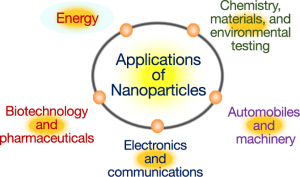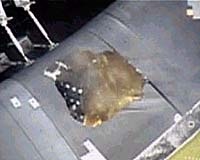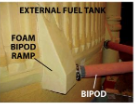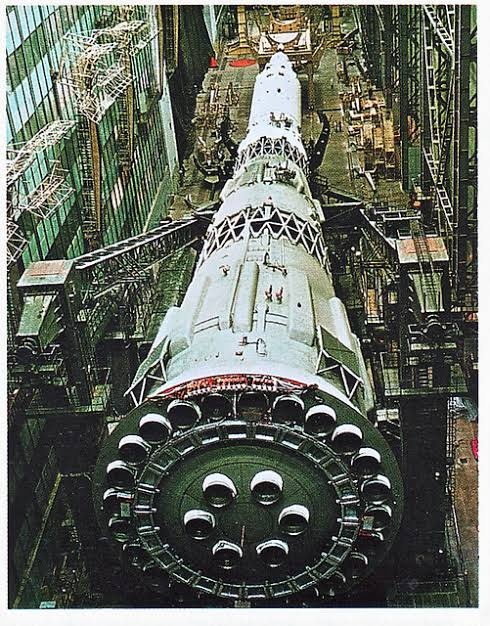Reading Time: 18 minutes
Author: Sanidhya Somani, ECE, 2nd Year
Abstract
For decades we have been hearing that the chemical industry and there also the coating industry, need to break free from its dependency on oil because there are finite resources. Renewable raw materials are constantly under discussion. The paint and coatings industry is focused on innovation and being “green”. Green means a smaller carbon footprint, low VOC content, high renewable content and green processes. The use of renewable ingredients to reduce the carbon footprint, eliminating the use of hazardous materials, introducing bio renewables, incorporating recycled materials, lowering VOC emissions, decreasing energy consumption and reducing waste, while proving it can all be accomplished cost-effectively to become more environmentally responsible. The reduction of environmental damage done by coatings sometimes begins before manufacturing even starts. Research into the carbon footprint of coating materials, or the overall amount of climate-affecting carbon dioxide produced in their manufacture, application, transport and disposal, shows that some coatings simply use fewer resources throughout their life cycles. This paper discusses advances in the use of renewable resources in formulations for various types of coatings. The developments in the application of (new) vegetable oils and plant proteins in coating systems are discussed here.
Introduction
As the climate continues to change, human population continues to grow, and our natural resources continue to diminish, industries have seen a global shift, placing greater importance on green design and sustainable business practices. However, green design is less about following a popular trend than it is about simply respecting our limited natural resources. The architectural coating industry is no exception to this trend, as building and construction regulations continue to evolve and incorporate higher standards for environmentally friendly practices.
Suppliers to the coating industry offer an increasing range of bio-based raw materials. For instance, a green hardener with a high carbon content from renewable resources. Raw materials from renewable resources was one of the trends. Manufacturers are working harder than ever to develop high-performance coatings that lessen the negative impact on the environment. To do this, coating developers created innovative manufacturing techniques that protect air and water quality while reducing the unnecessary consumption of natural resources. They focus on eliminating the use of hazardous materials, introducing bio-renewables, incorporating recycled materials, lowering VOC emissions, decreasing energy consumption and reducing waste, while proving it can all be accomplished cost-effectively.
However, in the past few years consumer’s and industrial interest in environmentally friendlier paints and coatings has been growing tremendously. This trend has been spurred not only by the realization that the supply of fossil resources is inherently finite, but also by a growing concern for environmental issues, such as volatile organic solvent emissions and recycling or waste disposal problems at the end of a resin’s economic lifetime. Furthermore, developments in organic chemistry and fundamental knowledge on the physics and chemistry of paints and coatings enabled some problems encountered before in vegetable oil-based products to be solved. This resulted in the development of coatings formulations with much-improved performance that are based on renewable resources.
A Look-Back
Coating manufacturers around the world worked tirelessly to create paints that eliminated adverse environmental implications and pushed the industry towards a more sustainable future. Volatile Organic Compounds (VOCs) have long been part of the coating industry as their properties have aided in the application of coatings. Recognized as a component of the common aroma of paint fumes, VOCs are believed to contribute to the formation of ground-level ozone and urban smog, which in turn, may contribute to adverse health effects. After truly understanding the effects of VOCs, coating manufacturers directed their focus to creating formulations that lessen the need to use solvents. It was able to achieve this by using a higher percentage of solids in its formulations that resulted in less coating volatizing into the air.
The next step is to look at the coating process. Even the way coil coatings are applied to the metal used for wall and roofing panels has been enhanced for better environmental performance. Coil coating— where the paint is rolled onto the metal in a factory setting— is a pretty energy efficient technique. When coil coating metal panelling, the VOC gases that are released during the process are returned to the system, and through the use of a thermal oxidizer (also known as a thermal incinerator), become fuel for the curing process.
A view on Low VOC coatings
VOC is a general term referring to any organic substance with an initial boiling point less than or equal to 250 degrees Centigrade (European Union definition) that can be released from the paint into the air, and thus may cause atmospheric pollution. VOCs are volatile organic compounds that can be naturally occurring (such as ethanol) or can be synthesised chemically. The VOC content in water-based paints may be a very small amount of solvent or trace levels of additive in the paint that are needed to enhance its performance. Paint is made up of a number of components. Some of these may be of natural origin (such as minerals, chalk, clays or natural oils), other components (such as binders, pigments and additives) are more often synthetically-derived from different industrial chemical processes. All these components need to undergo some degree of washing, refinement, processing or chemical treatment, so they can be successfully used to make paint. These production steps necessitate the use of different process aids, including substances that are classed as VOCs. Although every effort is made to remove these VOCs through drying and purifying, there will still be trace amounts in the finished raw materials that are used to make the paint and the tinting pastes that are needed to be used. Therefore, there is no such thing as a truly 100% VOC-free or Zero VOC paint, as all paints will contain very small (trace) amounts of VOCs through their raw materials. There are several key contributors to the environmental footprint of household paint – the extraction/production of the raw materials, the cost of transporting paint from factory to retail outlet to your home, and how long the painted surface will last until it needs repainting i.e. how durable the paint film is. This last aspect is of particular interest – a durable longer-lasting paint is better for the environment. Many paints which claim ‘Zero VOC / VOC-free’ credentials are based on natural clays and oils rather than synthetic binders such as vinyl or acrylic. This has an impact on how resistant the paint film is to water or to damage – generally, synthetic-binder based paints will provide a much more durable and resistant paint film, so would be expected to last longer than a clay paint. Thus, walls with these clay paints on may need repainting more often, and the clay paints would not score so well, when viewed from an overall environmental footprinting approach. Thus, perversely, ‘Zero VOC’ clay paints may actually be more harmful to the environment than standard synthetic-binder based paints, due to this increased maintenance cycle.
Protein and vegetable oil-based coatings
As an increasing interest is observed in the development of more environment-friendly paints and coatings. In recent, the developments in the application of vegetable oils and plant proteins in coating systems are addressed. Regarding vegetable-oil-based binders, current research is focussed on an increased application of oils from conventional as well as new oilseed crops. A very interesting new vegetable oil, for example, originates from such crops as Euphorbia lagascae and Vernonia galamensis, which have high contents (>60%) of an epoxy fatty acid (9c,12,13 epoxy-octadecenoic acid or vernolic acid) that can be used as a reactive diluent. Another interesting new oil is derived from Calendula officinalis, or “Marigold”. This oil contains >63% of a C18 conjugated tri-ene fatty acid (8t,10t,12c-octadecatrienoic acid or calendic acid), analogous to the major fatty acid in tung oil. Presently, research aims at evaluating film-forming abilities of these oils and of chemical derivatives of these oils, both in solvent-borne and water-based emulsion systems. In research on industrial applications of plant proteins, corn, but particularly wheat gluten has been modified chemically to obtain protein dispersions that have excellent film-forming characteristics and strong adhesion to various surfaces. Especially wheat gluten films have very interesting mechanical properties, such as an extensibility of over 600%. Gas and moisture permeabilities were found to be easily adjustable by changing the exact formulation of the protein dispersion.
Wheat gluten coatings
In developing non-food applications of proteins, various proteins such as soy protein, corn gluten, wheat gluten, and pea proteins are being studied. Based on its unique functional properties, wheat gluten can be distinguished from other industrial proteins. Examples are its insolubility in water, adhesive/cohesive properties, viscoelastic behaviour, film-forming properties and barrier properties for water vapor and gases. Wheat gluten shows, like other amorphous polymers, a glass transition temperature (T,). Below the Tg, gluten films are brittle. To obtain rubbery gluten coatings, the addition of plasticizers is required.
Vegetable oil-based coatings
In the past many seed oils have been applied in various coatings formulations. In the 1950s the most common plant oil in trade sales paint formulations was linseed oil with a share of 50%. Since then not only the total volume of fats and oils used in drying oil products has declined, also the relative position of linseed oil has slowly declined to less than 30% of the plant oil used. Simultaneously the share of soybean oil increased such that now soybean oil is the predominant oil used in this area. The use of soybean fatty acids in ‘soybean-modified’ alkyds is obviously a contributing factor to this.
Water-borne emulsion coatings
The major advantage of water-borne emulsion coatings is the reduction in volatile organic compounds emission upon drying of the film. In the past, research has been focused on the emulsification behaviour of pure linseed oil. The application of waterborne paints to coat wood, metal, plastics or mineral substrates has increased considerably over the last ten years. The share of the market for waterborne coatings varies greatly between countries, as it does between coating market segments. The global coatings market can be categorized broadly into decorative coatings and industrial coatings. Waterborne silicate paints combine high permeability to water vapor and carbon dioxide with a very useful minimal soiling tendency. The term functional paint surface is understood to imply improvements such as the avoidance of algal and fungal growth by the introduction of nanoparticulate silver to replace biocidal compounds and improved soiling resistance and degradation of air pollutants through the use of photocatalytically active nano-titanium. More than 80% of the sealant systems for parquet floors and solid wood flooring are water-based, often using a combination of water-based polyurethane dispersions and self-crosslinking polyacrylate dispersions.
100% Renewable Ethoxylated Surfactants
Bio-based ethylene oxide (EO) will meet this demand by enabling the synthesis of various ethoxylated surfactants and emulsifiers which are 100% bio-based. Ethoxylation is a common process used to generate a range of products for emulsification and wetting, including ethoxylated alcohols, carboxylic acids and esters. While the hydrophobic portions of many of these surfactants are already naturally sourced from plant oils, only petrochemical-derived EO has been available. With the production of bio-based EO in the near future, ethoxylated products can now be produced from 100% bio-based content, allowing customers to choose fully renewable products without sacrificing performance. In addition, by incorporation into synthetic base materials, the bio-based content can be significantly increased, allowing formulators to meet challenging new targets. Alkyl polyglucosides are an example of a surfactant class based on renewable raw materials. Other bio-based options include some betaines and proteins, but these are rarely used in the coatings market. Fermentation is used to make some production processes more environmentally friendly and bio-catalysis is also being actively researched. Far more abundantly available and used renewable sources are the natural oils from animal fats or plant seeds. Some of the derivatives of these are oleochemicals. The fatty content from the oils can be separated by distillation into products containing chains of 12 to 18 carbon atoms in saturated or unsaturated form. For example, lauryl, cetyl, stearyl and oleyl alcohols are commonly available and have appropriate hydrocarbon chain lengths to function as the hydrophobic tail group in surfactants. many renewable ionic surfactants can be made by this route including quaternary ammonium salts, amine oxides, and alcohol sulphates.
Biorenewable sources used during manufacturing of polyurethane (PU) adhesives have been used extensively from last few decades and replaced petrochemical based PU adhesive due to their lower environmental impact, easy availability, low cost and biodegradability. Biorenewable sources, such as vegetable oils (like palm oil, castor oil, jatropha oil, soybean oil), lactic acid, potato starch and other biorenewable sources, constitute a rich source for the synthesis of polyols which are being considered for the production of “eco-friendly” PU adhesives.
Ultraviolet curable coating technology
The advances in ultraviolet (UV)-curing coating technology to develop high performance coating systems that have zero discharge of volatile organic compound (VOC) emissions or hazardous waste generation. Included in the research was the incorporation of certain proprietary, non-toxic, corrosion-inhibiting pigments into the coating formulations. One of several problems is that of the pigments in the UV curing formulations absorbing the UV light and therefore not allowing the UV light to cure the paint. The pigments also increase the viscosity of the paint and make it more brittle than it would be unpigmented. There are low viscosity polymers available to use but they invariably have a low molecular weight which makes for low resistance to chemicals. The higher molecular weight polymers resist chemicals and solvents better but are invariably more brittle. It was an ever-present challenge to balance each coating’s UV curability against its viscosity and brittleness, and its chemical resistance against its brittleness.
Spray booth technology
This has unveiled a scrubbing system, which utilizes a regenerative dry filtration process that separates wet paint overspray from spray booth process air. The process allows significant reductions in paint spray booth energy usage and emissions. Spray booths are the leading energy consumer at most large-volume paint finishing operations. By recirculating a substantial portion of exhausted air from the spray booth back into the painting chamber, the quantity of air that must be fully conditioned is significantly reduced. The dry system operates by directing paint-laden process air into scrubber chambers located directly below and on either side of the painting chamber. Each scrubbing chamber contains an array of porous, plastic filter elements. To protect the filter elements from becoming fouled with tacky paint particles, a process referred to as pre-coating is utilized. The pre-coat process extends the life of the filter elements to a minimum of 15,000 hours.
Replacement of Commercial Silica by Rice Husk Ash in Epoxy Coating
Since epoxy resins are used as composite matrix with excellent results, and silica is one of the fillers most often employed, the rice husk ash (RHA) as filler replace high-purity silica in epoxy composites. RHA and silica exhibited similar mechanical and water absorption characteristics, indicating that rice husk ash may be a suitable replacement for silica. the good filler dispersion and distribution in the polymer matrix, highlighting the more effective adhesion interface between RHA particles and the matrix. RHA behaved similarly to crystalline silica, so it can be used as replacement of silica with little loss of properties. The tensile strength and water absorption values were around the same order of magnitude, though RHA composites exhibited better values in general. SEM analysis showed that filler particles distributed well into the polymer matrix. The adhesion interface between filler particles and polymer matrix was more effective when RHA was used, though some voids associated with porosity of this material were observed. Viscosity values revealed that viscosity of mixtures prepared with RHAs increases exponentially with the proportion of filler added (60%), pointing to the risk of problems in processing operations, depending on the application of composites. In this sense, alternative methods to control and reduce viscosity should be considered when high proportions of RHA are used. Overall, lower amounts of RHA (20% and 40%) produce composites with properties that are comparable to those prepared with commercial silica as filler.
Nanomaterials applications in “green” functional coatings
The global coating market is huge, worth over US$100 billion annually, with applications for physical and chemical protection, decoration and various other functions. In the last decade, the trend is definitely pointing toward the replacement of traditional VOC (volatile organic chemical)-based paints and polluting processes like electroplating with environmentally friendly materials and technologies. Nanomaterials play a significant role in the new generation of “green” functional coatings by providing specific functionalities to the base coating. For the replacement of electroplated metal coatings, a multilayer coating stack providing anticorrosion, mirror-like reflective and antiscratch functions was developed. Nanosized metal and ceramic particles are used to achieve these functions without the use of any polluting chemicals nor the release of any heavy metal contamination typical from electroplating processes. Furthermore, a multifunctional environmental paint was developed for wood surfaces. The key ingredient in this water-based paint is mesoporous silica nanoparticles, which offers high water resistance and a short drying time. This versatile material also offers high chemical tunability, which allows the incorporation of various additives to achieve multiple functions including antibacterial action and resistance to fire, household chemicals and UV (ultraviolet) exposure.
Powder coatings
Coatings such as water-based paints and finishes applied by the powder coating process, in which powdered material is sprayed onto a surface and then baked on to form a tough protective barrier, have lower carbon footprints — and consequently lower environmental impact — than coatings that must be thinned with chemical solvents before they are sprayed or painted onto the surface. Simply choosing a lower-impact alternative like these is an instant way to improve the green-ness of a project or product.
Likewise, advances in powder coating have made these finishes tougher, meaning that the new-generation coatings can be applied in thinner layers than their predecessors. Thus, less material gets used in the process; not only does this reduce the amount of overspray — excess powder that doesn’t adhere to the surface and has to be cleaned up afterward — but it also saves money in situations that involve coating large surfaces, such as the metal sides of shipping containers.
Solar Reflective pigments
When the strong rays of the sun strike the roof and exterior of a building, the absorbed infrared light is converted to heat, which leads to a rise in interior temperature. Within an urban sprawl, this problem compounds with smog, asphalt and a lack of vegetation creating a phenomenon known as the “heat island effect.” This effect can dramatically increase costly air conditioning and electricity expenditures for building owners.
To help mitigate the heat island effect, manufacturers turned to solar reflective pigments that reflect infrared radiation while still absorbing the same amount of visible light. Through the incorporation of these pigments, manufactures created solar reflective coatings that stay much cooler than their non-reflective counterparts. Solar reflective coatings not only help lower energy costs without sacrificing durability, performance or beauty, but also provide an array of colours options that previously absorbed considerably higher amounts of infrared light.
CNSL: an environment friendly alternative for the modern coating industry
Considering ecological and economical issues in the new generation coating industries, the maximum utilization of naturally occurring materials for polymer synthesis can be an obvious option. In the same line, one of the promising candidates for substituting partially, and to some extent totally, petroleum-based raw materials with an equivalent or even enhanced performance properties, is the Cashew Nut Shell Liquid (CNSL). This dark brown coloured viscous liquid obtained from shells of the cashew nut can be utilized for a number of polymerization reactions due to its reactive phenolic structure and a meta-substituted unsaturated aliphatic chain. Therefore, a wide variety of resins can be synthesized from CNSL, such as polyesters, phenolic resins, epoxy resins, polyurethanes, acrylics, vinyl, alkyds, etc. The present article discusses the potential of CNSL and its derivatives as an environment friendly alternative for petroleum-based raw materials as far as polymer and coating industries are concerned. CNSL, one of the major sustainable resources, mainly extracted by hot-oil and roasting process, contains number of useful phenolic derivatives like cardol, cardanol, 2-methyl cardol, and anacardic acid with meta-substituted unsaturated hydrocarbon chain (chain length of C15). The combination of reactive phenolic structure and unsaturated hydrocarbon chain makes CNSL a suitable starting material to synthesize various resins like epoxy, alkyd, polyurethanes, acrylics, phenolic resins, etc. In addition, a number of other useful products, such as modifiers like flexibilizer and reactive diluents, adhesives, laminating resins, antioxidants, colorants and dyes, etc., have also been developed from CNSL and its derivatives. So, considering the high depletion rate of petroleum-based stocks and the range of possible applications, CNSL can be accepted as a greener and sustainable approach for future expansion in the modern coating industry.
How has the industry managed with all of the uncertainty related to being green? More or less all the leading coatings manufacturers have sustainability manifested in their corporate values and strategies and have implemented teams to steer the process toward more ecological solutions, from sourcing of raw materials to the development of new products and the optimization of manufacturing processes. At the same time, raw material suppliers are mainly focusing on the use of renewable raw materials, products without hazardous labelling, and energy efficiency across the value chain.
Impact of additives in green coating
Additives have a significant impact on performance and functionality, although they represent only a small fraction of the total content of a paint or coating formulation. The impact of additives on a formulation can vary depending on the application, but every component makes a difference. Green biocidal additives should be characterized by favorable human toxicology profiles. They should not cause substantial impact to the environment at use levels and should not be sensitizers. Silicon additives are absolutely necessary components of greener formulations. They can improve the longevity of paint, thus reducing the repainting frequency. They are often multifunctional, making it possible to replace two or three current additives with one. Surfactants and related additives, defoamers, dispersants, and other compounds that affect performance based on surface chemistry, are the easiest class of additives to target for developing green alternatives, since their chemical structures are well suited for synthesis from naturally derived materials.
COST AND PERFORMANCE COME FIRST
While nearly everyone across the coatings value chain, including end users, agrees that environmentally friendly products are desirable, there is a disconnect when it comes to paying for a more sustainable profile, “If current coating solutions are working for their customers and there is no regulatory drive to switch, then most end users will stay with that current technology.” Cost is a crucial factor, but many also have concerns about the long-term availability of greener or more sustainable materials— they want a that the new green products will be available for the expected lifetime of the products for which they will be used. Therefore, as green products are developed, they need to meet, or surpass, performance levels without adding cost. That can be an issue, because green products may be perceived as having the same, or worse, performance than other products while costing more. There is real demand for products that help manufacturers reduce energy consumption by requiring shorter bake times and lower curing temperatures. There has, in fact, been significant pressure from manufacturers on suppliers to make raw materials greener and more benign without compromising performance. Products with “zero-VOC” or “low-VOC” labels has continued to grow. There were initially performance challenges with low-VOC formulations, such as microfoam, blocking, compatibility, freeze/thaw resistance, open time, tack, dirt pickup, scrub resistance, and more, but there is a much greater range of available technologies today that help formulators improve the performance of paints and coatings while also meeting regulations and consumer demand for a small environmental footprint. points to new generations of low/zero-VOC products, high-performing coalescent, pigment dispersions, resins, reactive modifiers, tougheners, defoamers, and others, some of which may also incorporate biorenewable feedstocks such as plant-derived oils, fatty acids, and esters, or may avoid particular substances of increasing concern (formaldehyde, APE, bisphenol A, phthalates, etc.). Sustainable innovation is, in fact, occurring at both the process and product levels. Wet-on-wet processes are an ideal example of a new method that improves customer operations. the technologies aimed at reclaiming the water used during paint reduction, the formulation of higher-solids waterborne paints to reduce water consumption in products, as well as the costs and CO2 emissions associated with shipping latex, and improving dirt pickup resistance to reduce the need for washing and repainting, which can also help achieve water conservation goals. Across general finishing applications (metal, wood, composites), new resin developments have enabled reduction of air emissions and hazardous waste and elimination of chemicals that may potentially harm applicators. New polyurethane formulations, for example, not only provide a way for end users to meet environmental standards, but also to reduce energy consumption and inventory levels. In fact, advances in product and process environmental profiles have typically led to the need for advances in other technologies to maintain or achieve greater performance properties.
Conclusion
Coating manufacturers across the globe are continuously looking for new innovations that will push the industry to a greener future. The renewables and recycled materials are crucial elements in the implementation of a green agenda. For example, both bio-renewable materials that remain in backers and a bio-renewable polyester resin system for interior coil applications. They use recycled bio-renewables like vegetable oil, which is an effective substitute for fossil fuels. Another example is the use of both virgin vegetable oil and recycles or used oil. These products contain a resin system composed of up to 30 percent bio-renewable products, resulting in a sustainable finished product that doesn’t lose bio-renewable materials during the curing process. Used predominantly in the coatings developed for backers, giant coils of sheet metal are turned into all types of pre-painted construction products. These materials are not only eco-friendly and sustainable but can be achieved without any significant cost to the coating material.
The coating materials are also going green by changing the processes they use to handle coating-related waste. In anodizing, for example, manufacturers can use chemical flocculants that bind the toxic, waterborne aluminium hydroxide into a solid that can be compacted and handled more easily. They may also employ advanced drying technology to remove most of the water from the sludge created by the flocculent. In some cases, this leftover material contains so much aluminium – which would otherwise go into a landfill or leach into the environment – that it can be recycled and used in the production of other aluminium products.
And recycling plays other roles in helping coatings be more earth friendly. There are, however, still questions about how the impacts of raw materials and coating products should be measured. If, for example, an oil-based chemical is replaced with a renewable-based chemical, is it better for the environment? The answer is: that depends on the energy footprint it takes to make the renewable-based chemical relative to the oil-based chemical, and it also depends on how the renewable process impacts other uses of the same resources. “It is very important to the industry that all of these considerations be accounted for to ensure that we truly make the right choice for a sustainable future.”
References
Paint and coating industry https://www.pcimag.com/articles/100363-sustainability-in-the-coatings-industry
British coating federation https://www.coatings.org.uk/next-generation-raw-materials_seminar.aspx
Hydrocarbon Magazine, Oct 2014 and Scientific Design
European coating https://www.european-coatings.com/Publications/Blog/The-future-is-green-for-the-coatings-industry-tool
Coating world https://www.coatingsworld.com/issues/2018-08-01/view_features/100-renewable-ethoxylated-surfactants
ResearchGate https://www.researchgate.net/publication/311364037_Composite_ Coatings_Based_on_Renewable_Resources_Synthesized_by_Advanced_Laser_Techniques
Science Direct https://www.sciencedirect.com/science/article/pii/0926669094000392
ResearchGate https://www.researchgate.net/publication/260174804_P24_Paints_ based_on_renewable_materials
ResearchGate https://www.researchgate.net/publication/293772650_Lesquerella_ renewable_resource_for_industrial_coatings_and_polyurethane_foams
ResearchGate https://www.researchgate.net/publication/323476264_Synthesis_and_ Characterization_of_Renewable_Resource_Based_Green_Epoxy_Coating
https://www.researchgate.net/publication/27349117_Resins_and_additives_for_powder_coatings_and_alkyd_paints_based_on_renewable_resources
Team CEV,
By : Sanidhya Somani,
ECE Department (2 nd Year)































